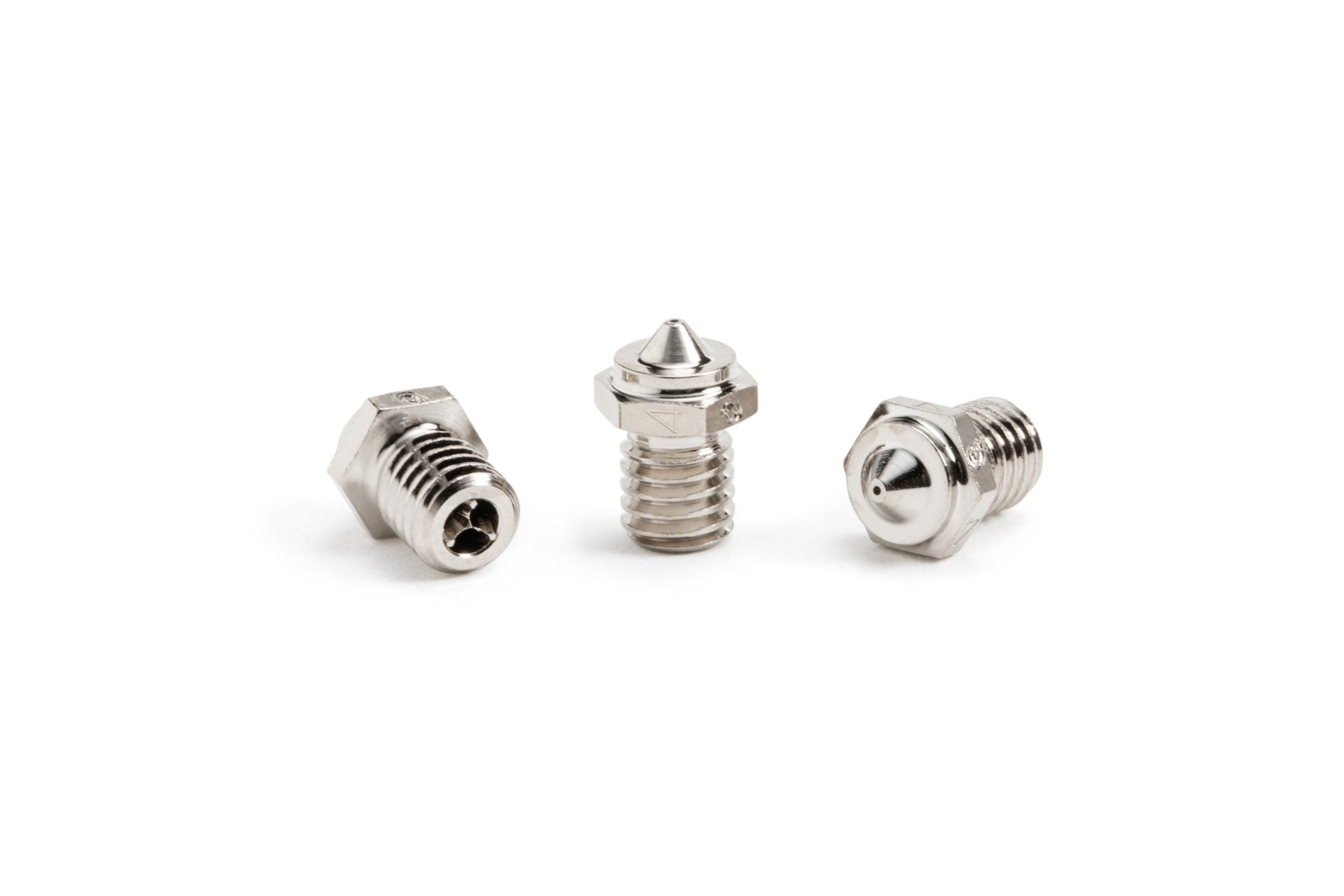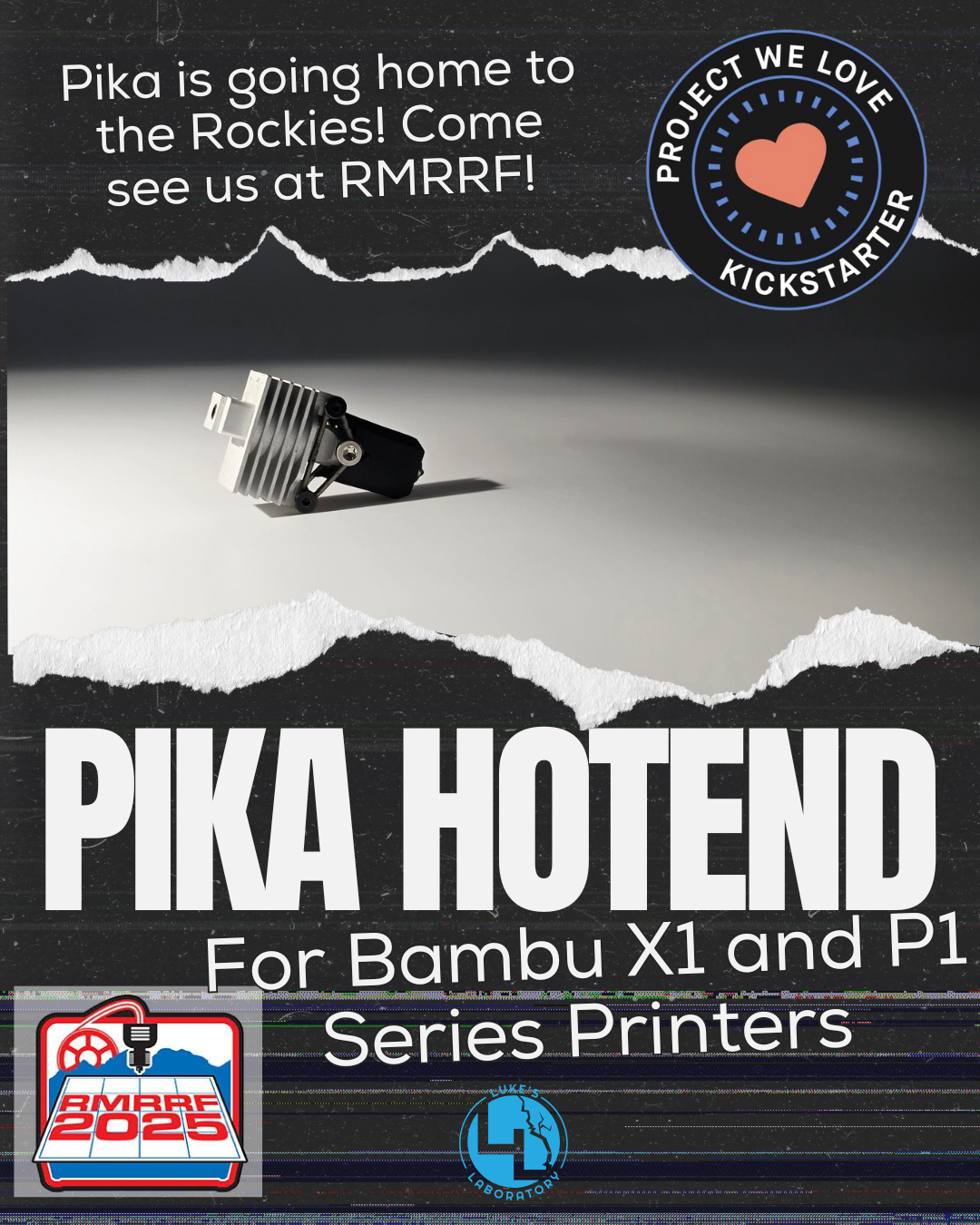- One beat of consistent feedback is that the FIN nozzle is "a new standard just for the sake of a new standard" with plenty of people referencing a very famous XKCD -

Like many of you in the last few years, we found ourselves drowning in an era of proprietary/non-replaceable heaters, thermistors, and nozzles. For this reason, the Chube hotend traversed a separate path; embracing the common heaters, thermistors, and nozzle types popularized by E3D shortly after the Rep-Rap Revolution! We believed in embracing these standards so much that the Chube hotend supports both standard V6 and Volcano nozzles. All you need to do is swap out a meltzone adapter, and you have the ability to use either standard. We truly believe that empowering users to “choose their own adventure” with components such as these is important, and allows people to use the items that they love.
Then why use the FIN standard in your new hotend? I have a bunch of V6 nozzles already!
Here's the thing - we also have a bunch of v6 nozzles. Seriously. A bunch.
MMU systems, like the Bambu Lab AMS, greatly benefit from hotends that have a low thermal mass. The faster your hotend heats up and cools down, the faster multi-material prints finish, making printers more productive. Consequently, many companies have implemented the same or similar MMU systems, therefore hotend construction has gotten smaller and lighter to make MMU changes faster and better.
In order to make smaller hotends for the highly popular MMU style printers, many OEMS and aftermarket manufacturers have designed non-standard, non-published, nozzle sizes for their machines, sometimes even changing them between printer generations. This means that people who have already bought those machines, run the risk of their entire machine becoming obsolete just because the nozzles are no longer available. Some of these hotends don’t even have replaceable nozzles, meaning an entire hotend may need to be replaced due to a clog, or other easily rectifiable issue. We think that people should be able to access a new nozzle from numerous sources, in order to continue utilizing the machine that they bought and paid for. It is our thinking, that a nozzle standard suited to these types of printers, and therefore hotends, is highly beneficial for users.
When Slice released their FIN standard as open source, (Under CC BY-SA 4.0), with support from other major nozzle OEMS like Microswiss and Bondtech, we saw huge potential for the next generation of small hotends. We see a world where the FIN standard provides small-hotend customers a wide and robust ecosystem of nozzles, which we’ve already begun to add to.
But Luke, the V6 nozzle has been a standard for over a decade now, you still haven't explained why you didn't choose the V6????
Alright - so, remember when I was talking about how, because of the high use of MMU systems, hotends have been trending towards lightweight, low-mass solutions?
Well, that’s where the venerable V6 nozzle falls flat on its face, while the FIN nozzle stands *small* (haha). In all seriousness, FIN has been engineered to be as thermally and materially efficient as possible, while supporting a wide range of possible installations.
And it’s not just the fancy geometry for a boot seat. That 100% can be replicated on a V6 size nozzle, and we actually are considering remixing & posting it (as required by the CC BY-SA 4.0 license) into a V6 standard for y'all to enjoy as well.
What it really boils down to is size. Let me show you what I mean:

As Slice notes on their release page, the diminished size of the nozzle is very intentional. By shrinking the length as well as the thread diameter and pitch, they gain a few very important advantages over the storied V6:
- Reduced torque required to seal properly and stay sealed: When you have nozzles that are different materials and expand differently than the block material, you can run into situations where if you don't preload the threads enough while hot, you'll wind up with leaks, caused by the difference in expansion rates. This is why nozzles made from pure tungsten carbide need to be tightened above the hottest temperature you will print at, to prevent mid-print leakage. An overall smaller nozzle means the impact of differences in thermal expansion coefficients affect your hotend less.
- Reduced nozzle material impact on printing parameters: It’s a well-known fact that when using steel nozzles, you need to bump hotend temps up by 5C in order to keep your flow rates up and/or avoid an impact on layer adhesion. This is because the last material the plastic interacts with is the nozzle, so if you've installed a steel nozzle for abrasive use, your effective heat transfer to the filament will suffer due steel’s lower conductivity. This is a function of both length and thickness of the nozzle, with an idealized nozzle being functionally 0% of the meltzone while still being replaceable and (in the case of steel) a more durable output than the copper that your heatblock is likely made of. The FIN nozzle, being 24% shorter, and 30% narrower, significantly decreases its impact on your total hotend performance, allowing you to use steel nozzles without having to adjust profiles.
- Smaller nozzles allow for smaller hotends: I'll share a screenshot here of a V6 nozzle and a FIN nozzle in the same hotend, the Pika.

Due to the massive size of V6, to properly accommodate it, I’d need to significantly grow the width of the Pika hotend, as well as shorten the non-nozzle meltzone length in order to gain clearance.
So, in order to avoid significantly increasing the size of the hotend from stock, which would damage MMU performance, I've opted to use the FIN standard in the Bambu Lab ecosystem, which has no dominant nozzle standard. We think FIN makes a lot of sense for these types of hotends, and have already contributed to the variety of FIN nozzles available on the market, by bringing a FIN TC nozzle to market. We hope to continue contributing to this new standard, because we hope to continue building toward the future.
We believe that FIN is the future, and look forward to continued adoption as it significantly simplifies implementing silicone boots on hotends!





